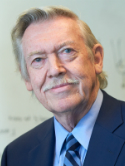| Abstract: |
Hematopoietic stem cells (HSCs) are characterized by their extensive self-renewal capacity and pluripotency. The probabilities of asymmetric versus symmetric division of HSCs can be stochastically determined or influenced by external signals. There are many in vitro systems involving either bone marrow (BM) stromal support or provision of a combination of recombinant hematopoietic growth factors, or both, that can maintain HSC proliferation and differentiation over many weeks. However, the goal of significant expansion of the HSC population in vitro has proved more elusive. There has been an explosive increase in knowledge of the cellular and molecular bases of HSC regulation. There is considerable redundancy in pathways regulating HSCs, and both additive and synergistic interactions between different pathways determine the balance between self-renewal and differentiation. With the identification of specific niches within the BM including endosteal and endothelial, it is now recognized that intimate interactions between HSC and regulatory components of the marrow microenvironment determine HSC proliferative status, pool size, differentiation and mobilization. © 2014 Elsevier Inc. All rights reserved. |



